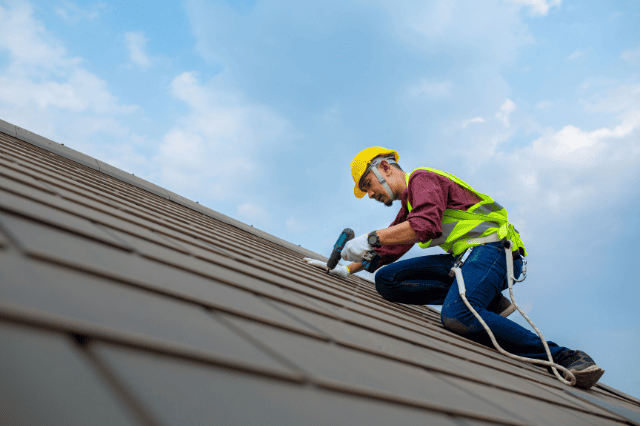Renovating an investment property inside a self-managed super fund (SMSF) is possible, but it comes with strict limits. It is one of the most misunderstood areas of super law, and mistakes can lead to breaches of Australian Taxation Office (ATO) rules. The key factors are the difference between SMSF repairs and improvements, compliance obligations, and how renovations are funded.
This guide from Ausfirst Lending Group outlines what is permitted, what is not, and how trustees can manage SMSF property renovations while staying compliant and protecting their retirement strategy.
Why Renovation Rules Matter in an SMSF
Renovating through an SMSF is not as flexible as owning property in your own name. Every decision must comply with the SIS Act and ATO SMSF renovation guidelines to ensure the fund is managed for retirement savings rather than personal benefit.
Borrowing adds further restrictions. The property purchased under a Limited Recourse Borrowing Arrangement (LRBA) is held in a separate trust structure until the SMSF loan has been fully repaid. This structure limits risk to the SMSF, which is why the ATO closely controls what can and cannot be done while a loan is in place.
The stakes are high. Breaching SMSF rules can see the fund taxed at 45% and trustees personally penalised. Staying within the rules allows you to maintain the property, protect rental income, and preserve long-term value without risking compliance.
Repairs: What You’re Allowed to Do
SMSF repairs and maintenance are generally permitted within an SMSF property, even when a Limited Recourse Borrowing Arrangement (LRBA) is active. The ATO defines a repair as restoring something to its original condition. Repairs do not fundamentally change the property but bring it back to a safe, liveable, or functional state.

Examples of allowed repairs include:
- Fixing a leaking roof or broken guttering.
- Replacing damaged floorboards or cracked tiles.
- Repainting walls after long-term wear and tear.
- Repairing plumbing or electrical systems.
- Replacing a faulty air conditioner with one of similar capacity.
Because repairs are considered routine maintenance, they do not breach borrowing restrictions. In many cases, these costs may also be deductible from the SMSF, though you should confirm this with a tax adviser.
Improvements: What You’re Not Allowed to Do Under Borrowing
SMSF property upgrades are where trustees often get into trouble. The ATO defines an improvement as work that enhances the property’s value, function, or standard beyond its original condition. Understanding SMSF improvements vs repairs is critical because improvements are generally not allowed to be funded with borrowed money under an LRBA.
Examples of prohibited improvements using loan funds include:
- Adding a new room, garage, or granny flat.
- Installing a swimming pool or spa.
- Converting a storage shed into a studio apartment.
- Upgrading a basic kitchen to a luxury kitchen with higher specifications.
- Turning a single dwelling into multiple units.
That said, if the SMSF uses its own cash reserves (not borrowed money), some improvements may be permitted, provided they still comply with the sole purpose test and fund rules. Timing also matters. Once a loan is fully repaid, trustees often have more flexibility to fund upgrades directly from SMSF assets.
Compliance Rules Trustees Must Follow

Even if you understand the distinction between repair and improvement, SMSF compliance obligations can still trip you up. Legislation places multiple layers of duties on trustees.
- The sole purpose test – Renovations must only support retirement benefits. Allowing a member’s child to live in the property, even at market rent, creates a conflict of interest.
- Related-party restrictions – Members who are builders cannot work at a discount. All services must be at market value, arm’s length, and fully documented.
- Audit and record-keeping – SMSFs are audited annually, so trustees must keep invoices, contracts, and proof of payments to show that work was funded correctly.
- SIS Act restrictions – Work done using borrowed funds must never alter the property into a different asset class.
The consequences of non-compliance are severe. The ATO can impose penalties on individual trustees, and in some cases, disqualify them altogether. The fund could also lose its concessional tax status, resulting in punitive tax rates.
The takeaway is that compliance is not just a “tick-the-box” exercise. Meeting SMSF trustee responsibilities helps protect the integrity of the fund and ensures its assets continue to work toward your retirement goals.
Funding Renovations and Upgrades: Allowed vs Not Allowed
Renovations don’t just raise the question of “what” you can do but also “how” you can pay for it. The funding source is a critical compliance factor.
| What’s Allowed | What’s Not Allowed |
| Paying for necessary repairs using SMSF cash reserves, even when a loan is active. | Using LRBA borrowings for anything beyond repairs and maintenance. |
| Using SMSF funds (not borrowings) for improvements once the loan is fully repaid. | Redrawing or topping up an existing LRBA loan to cover improvements. |
| Keeping a renovation sinking fund inside the SMSF to cover expected costs. | Paying directly from a member’s personal account which may be treated as an ineligible contribution or breach of contribution caps. |
This is why trustees often wait until their LRBA is discharged before committing to significant upgrades. Alternatively, some funds plan ahead by setting aside cash reserves early, ensuring they have the means to cover improvements down the track without breaching SMSF borrowing restrictions.
For example, if your SMSF property needs a roof replacement due to age, you could fund it with LRBA borrowings if it’s considered a repair. But if you wanted to add a second storey to the property, you would need SMSF cash reserves after the LRBA is repaid.
Tax Treatment: Deductible Repairs vs Capitalised Improvements
Tax rules add another layer of complexity. The ATO makes a clear distinction between immediate deductions for repairs and capitalisation of improvements.
- Repairs and maintenance – may be immediately deductible, reducing the SMSF’s taxable income in that year.
- Improvements – generally added to the property’s cost base and depreciated over time.
This difference may significantly affect your SMSF’s tax outcomes. Immediate deductions can improve cash flow in the short term, while improvements affect long-term capital gains tax calculations. Trustees should consider not just compliance, but also the broader tax strategy when planning renovations.
Common Pitfalls That Lead to Breaches
Most trustees don’t deliberately break the rules, but breaches often happen through simple misunderstandings or poor planning. These mistakes are among the most common causes of SMSF penalties and breaches, and they can put the fund at risk.
- Treating major upgrades as repairs to justify using loan funds.
- Using borrowed money for improvements that increase value beyond the original property.
- Failing to keep clear records of renovation costs.
- Assuming any work is acceptable if it’s paid from SMSF cash.
- Overlooking how upgrades affect the property’s classification for tax purposes.
These pitfalls are easy to avoid with preparation. Trustees who slow down, confirm the rules, and get professional advice before starting renovations are far more likely to stay compliant and protect the fund’s long-term value.
Avoiding these pitfalls is the key to keeping your SMSF on track. Speak with an experienced SMSF mortgage broker for the right guidance before you renovate.
How to Stay Within the Rules
Renovations within an SMSF need careful planning to avoid costly mistakes. Trustees can reduce risk and stay compliant by following a structured approach:
- Seek expert advice early – speak with an SMSF specialist before starting any work.
- Review your LRBA agreement – understand the limits imposed on your loan and plan accordingly.
- Budget using SMSF reserves – ensure cash is available in the fund to cover improvements without breaching borrowing restrictions.
- Keep detailed records – file invoices, contracts, and payment evidence for the annual audit.
- Engage independent contractors – ensure all work is done at market rates to avoid related-party breaches.
- Time renovations strategically – hold off on upgrades until after the LRBA is cleared if necessary.
- Document your investment strategy – align all renovation decisions with the fund’s formal strategy to satisfy auditors.
By approaching renovations methodically, trustees can maintain compliance, protect the SMSF’s tax advantages, and still ensure the property remains a reliable, income-producing asset.
Making Smart SMSF Renovation Decisions
Repairs and maintenance are permitted within an SMSF, while improvements using borrowed funds are not. Using SMSF cash reserves provides more flexibility, but every renovation must still comply with ATO rules and align with the fund’s long-term retirement strategy. With the right approach, renovations can preserve and strengthen SMSF property while supporting your retirement goals.
Smart renovation decisions start with the right advice. Speak with Ausfirst Lending Group today to explore your SMSF lending and compliance options with confidence.
Frequently Asked Questions (FAQs)
Yes, but there are extra layers of compliance. Heritage properties often require council approval, and all works must meet both SMSF rules and heritage standards. Trustees should ensure their SMSF property investment strategy takes these restrictions into account.
Rebuilding may be considered a repair if the property is restored to its original condition. SMSF cash reserves or insurance payouts can be used, but LRBA borrowings cannot be used to fund the rebuild. Trustees should also be mindful of SMSF borrowing rules in these situations.
Upgrades such as solar panels, battery storage, or water-saving devices are usually considered improvements because they enhance functionality and add value. If the property is under an LRBA, these cannot be funded with borrowings. Once the loan is repaid, SMSF cash reserves may be used if the upgrade aligns with the fund’s investment strategy.
Subdividing is usually not permitted under an LRBA because it changes the nature of the asset and creates multiple titles. Even when borrowings are cleared, subdivision must be consistent with the SMSF’s investment strategy and must still meet all SMSF audit requirements. Professional legal and tax advice is essential before exploring this option.
The rules are broadly similar, but commercial property may allow limited internal works that improve usability, such as partitioning offices or paving access areas. Structural changes that alter the asset significantly are still classed as improvements. These must be funded from SMSF cash reserves, properly documented, and compliant with both ATO rules and your investment strategy.


